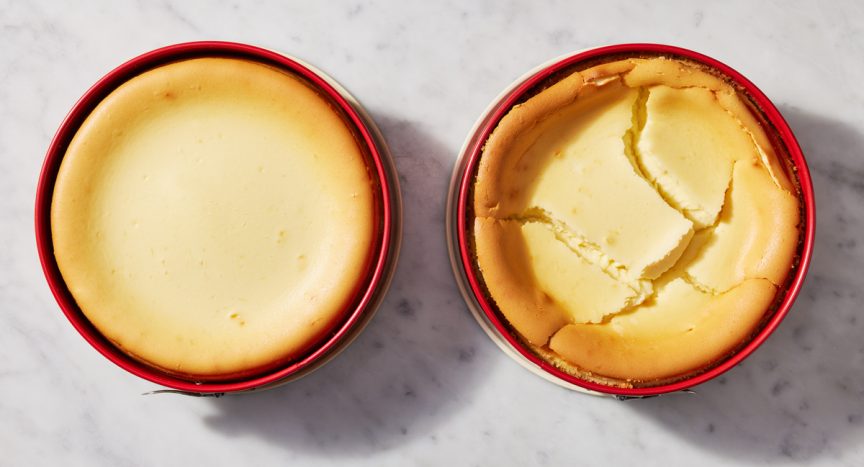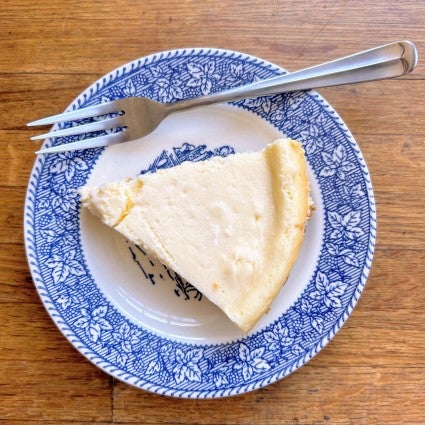There are several reasons cheesecake cracks – here's how to avoid ugly results.
Why cheesecake cracks: overbaking
Overbaking is the biggest cause of cracks. As the cake bakes, the heat causes the protein molecules in the egg to interact with each other and form a strong, pliable network; this is called coagulation, which ultimately holds the cake together.
But if the proteins are overheated, the network can become stiff and inelastic, creating an unhappy mixture of liquid (sugar and milk) and solid (egg) ingredients. Outcome? As the cheesecake rises in the oven, or sinks as it cools, cracks form.
Avoid this common cheesecake pitfall by baking at a lower oven temperature (325°F is typical) and at an accurate internal temperature. (A digital thermometer is your friend – we highly recommend one.)
- For a super creamy cheesecake, a thermometer inserted halfway into the filling, 1″ to 2″ from the rim, should read between 165°F and 170°F. The temperature in the center of the cake, measured the same way, should be between 150°F and 155°F. (It will continue to cook after it is removed from the oven.)
- For a stronger cakewhich is slightly grainy around the edges and fully set in the center, the temperature should not be more than 175°F at the edge and 165°F in the center when taken as above described.
Either way, the cake will still look wobbly in the center. Do not worry; it will continue to harden as it cools, first at room temperature and then in the refrigerator.
If the temperature of your cheesecake reaches 185°F or higher anywhere in the cake—edge or center—it will almost certainly result in a cracked top.
If you don't have a thermometer, judge the doneness of the cake by sight: A firm cake should look completely set 1″ from the edge, and a 2″ to 3″ diameter ring in the center should wobble like gelatin. For a cake with a center softer, widen that center ring to 4″.
Why the cheesecake splits: overmixing
Mixing the milk batter too hard can also cause cracking. The air you beat into the filling with a high-speed beater creates pockets of steam as the cake bakes, which compromise the firm structure of the cake and lead to cracks. To avoid this problem, make sure your cream cheese and eggs are at room temperature and mix the filling slowly until combined.
Why does cheesecake crack: a sudden change in temperature
The cheesecake will sink and shrink slightly as it cools; if this cooling happens too suddenly, the cake may crack. To prevent this from happening, cool your cheesecake right in the turned off oven. Bake the cake on the lowest doneness setting (as it will continue to bake as the oven cools), turn off the oven and open the oven door 4″ to 5″. Leave the cake in the oven until it cools to room temperature, then refrigerate.
And if your cheesecake cracks…
No problem; it is easy to cover the damage. Allow the cake to cool and then cool completely. Just before serving, add fruit (fresh or lightly cooked), Confectionery slushor a dollop of sweetened sour cream.
Worried about your milk being overcooked? Here's a tasty solution: No-bake cheesecake with raspberry sauce.
Cover photo by Rick Holbrook; food styling by Kaitlin Wayne.








